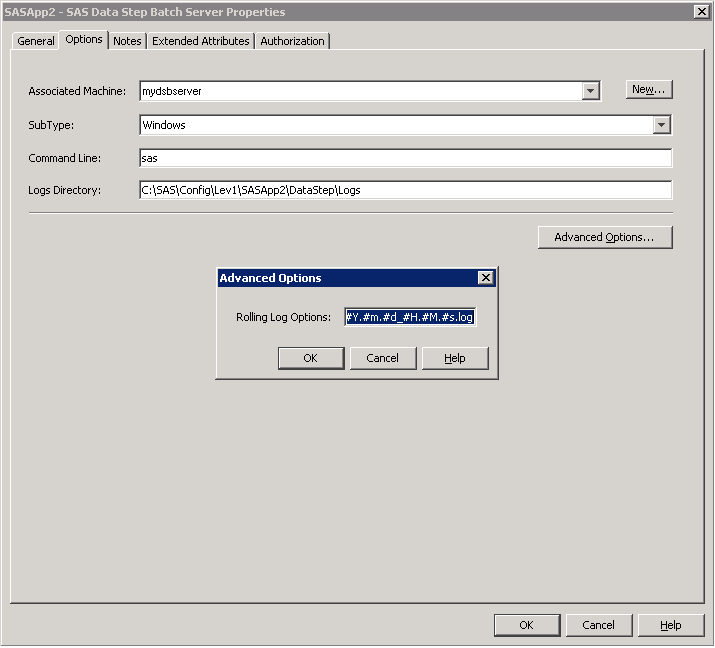The SAS DATA Step Batch Server
If your environment includes a SAS scheduling component, such as
Platform Process Manager, then the SAS Deployment Wizard will have
defined a Logical SAS DATA Step Batch Server and a SAS DATA Step Batch
Server as part of your SAS Application Server.
These properties are
explained in the following list:
Associated Machine
specifies the machine
on which the SAS DATA Step Batch Server was configured. This is also
the machine on which the deployed job is presumed to reside. It is
not necessarily the machine on which the scheduled job will actually
execute. The job will execute on the machine where the scheduling
server is running. Ensure that any commands that you store in the
batch server are capable of running on the scheduling server.
Command Line
specifies the script
that will start SAS in batch mode so that it can execute the job.
This script must be able to execute on the scheduling server host.
Logs Directory
specifies the log directory
to which SAS can write a log file. This field is required when defining
a DATA step batch server. To specify the current directory, enter
./ or an equivalent specification for your host environment.
Rolling Log Options
specifies the format
for the name of the log file and indicates when a new log file should
be started.
The server is configured
to start a new log file automatically when the value of any directive
in the name changes. By default, the log file will roll over every
second (%s). For information about the directives used in the log
filename, see the documentation for the SAS system option LOG=.
Note: If you want to use the
SAS 9.3 logging facility instead of the traditional logging feature (prior to SAS 9.2),
enter a hyphen in this field, and append this option to the sas command:
-logconfiglocscript-path/logconfig.xml, where script-path is the absolute path to the sasbatch
script. For more information, see Enabling Server Logging in SAS Intelligence Platform: System Administration Guide.

